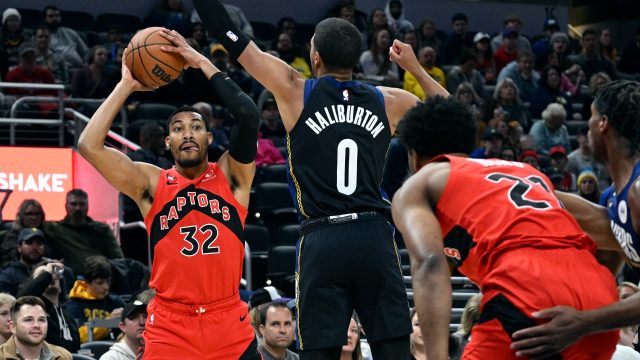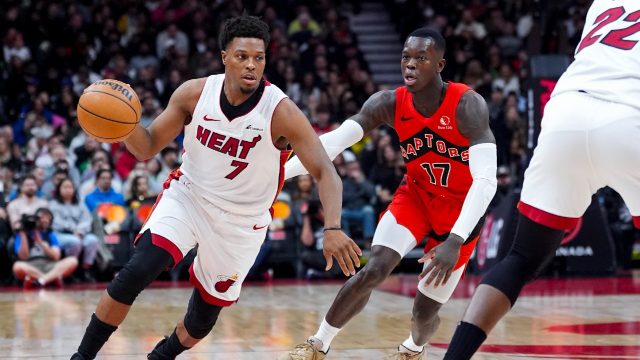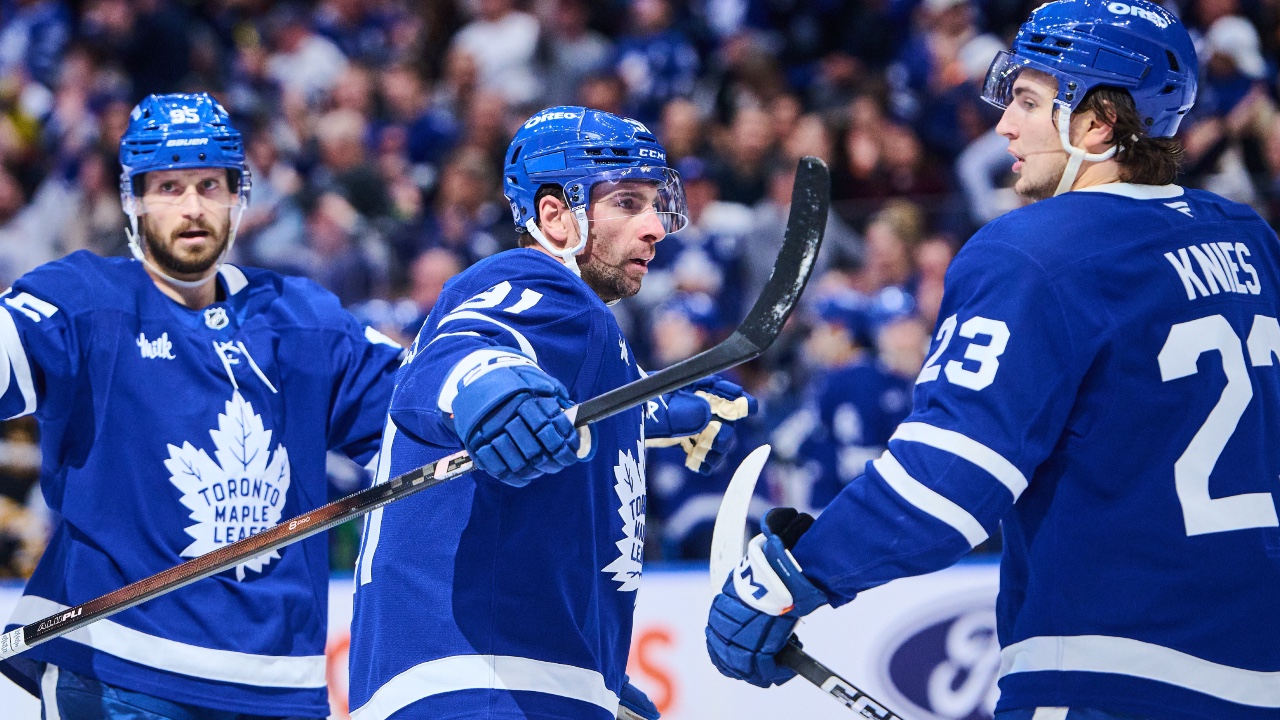
You may have heard this before, but the Toronto Raptors seem like they’re at a crossroads.
Do they push forward with the group they have, believing that with the right spirit, strategy and tactics there is a core in place worth building on?
Or do they acknowledge that this team can’t exceed the sum of its parts, and is destined to do what it did last season and is now doing in the early stages of this one: Struggle to play .500 basketball, with the likely ceiling the play-in tournament and a quick exit.
It feels like there’s a clock ticking – in fact, that is exactly the phrase a league insider used on the subject when we spoke about the Raptors situation earlier this week.
The Feb. 9th trade deadline is still two months away but the decisions on what directions need to be taken will likely be made long before that with the last few weeks of January mainly to hold out for the best possible deal, if that’s what it comes to. But if being competitive this season is the goal, the Raptors’ margin for error has been whittled away to almost nothing.
Starting Dec. 22 the Raptors play 17 of their next 24 on the road – no small issue for a team that is 3-6 away from home so far this season. The Raptors are in the middle of a stretch of seven-in-nine games at home – the exceptions are their dates Friday and Monday at Charlotte and New York, respectively.
Obviously, they need to take advantage now because further stumbles at this stage and it’s not hard to see the season getting away from them pretty quickly.
The early season optimism — new coach, new outlook, some new faces — remains, but the concerns are real and they’re growing.
“I think the mood is still good,” said Raptors centre Jakob Poeltl. “It’s serious in the sense where we’re having these conversations more often now, like we need to figure some stuff out. It can’t keep going the way it’s going right now. I think we all know, it’s not horrible, but it’s not up to our standards or what we expect from ourselves. I don’t think it’s necessarily wearing down on our mood, but it’s definitely a serious issue we’re addressing right now.
Now, let’s be clear, the Raptors have been idling at this intersection for a considerable amount of time. But because they have lost four of their last five and have had issues through 21 games with their offence, their defence, their bench production and lately the play of their starting unit, it’s worth looking at how Toronto got stuck here.
It was just a couple of years ago that the Toronto Raptors were sitting at three games under .500 and seemingly with no clear path forward.
At the time — late December in the 2021-22 season — the Raptors were coming off their ‘Tampa Tank’ season and while optimistic that their prized rookie Scottie Barnes could develop into a good player sooner rather than later, overall, expectations weren’t all that high: Svi Mykhailiuk and Khem Birch were part of the rotation, after all.
But then the Raptors reeled off six straight wins and were quickly three games over .500 on January 9th. They treaded water a little bit after that, but then they went on an eight-game streak before the All-Star break that year, before finishing on a 14-4 surge that pushed their record to 48-34, a significant improvement over the 31-win pace in a COVID-shortened 72-game season from the year previous.
At the time it felt like the Raptors had returned to their level. It wasn’t that far-fetched. After a championship in 2019 and playing at a team-record 60-win pace in 2019-20, believing that the season spent in Tampa and everything along with it was the anomaly, was an understandable conclusion. Even if the roster of those teams had turned over dramatically, and not for the better.
Siakam was the only remaining starter from the championship team. Not a single rotation-quality player had been added to counteract the departures of Kyle Lowry, Kawhi Leonard, Marc Gasol, Serge Ibaka and Danny Green.
And looking back, how real was that late-season push? Remember, the Raptors benefitted significantly from the border restrictions in place as the pandemic was still peaking. Teams were routinely leaving key players at home rather than risk them testing positive and having to spend time in quarantine in Toronto.
During their season-turning six-game winning streak the Raptors, playing in an empty arena due to a provincial ban on large gatherings, picked up wins over the Clippers without Kawhi Leonard and Paul George, a sub-.500 Knicks team missing three starters, the tanking San Antonio Spurs missing Dejuante Murray, the Milwaukee Bucks who were playing without Giannis Antetokounmpo and Brooke Lopez, the Utah Jazz who were missing five starters and their two top reserves and the New Orleans Pelicans who ended up 10 games under .500 that season.
From that point on, then head coach Nick Nurse who was already leaning into a tight rotation abandoned any pretense of using his bench at all. He basically went seven deep and in turn routinely pushed Siakam, Fred VanVleet, O.G. Anunoby and Barnes into the 40-minute range. Siakam and VanVleet tied for the league lead in minutes per game; Barnes was ninth and Gary Trent Jr. 14th. Had Anunoby played enough games to qualify he would have been fifth.
Still, as the Raptors began winning again the sense was a return to normal service rather than a team benefitting from pandemic-softened opposition and Nurse’s willingness to use his starters more than any coach in the league.
And it was from the perspective of a team on the rise rather than one outkicking their coverage that some big decisions were made.
Among them: trading down 13 spots in the 2022 draft in the deal with San Antonio that landed Thad Young. It was a move meant to add veteran depth to a young, winning team, made with confidence that whoever the Raptors drafted at 33 would be as effective over time as whoever was available with the 20th pick.
It turned out to be a mistake on several levels. Young, for all his qualities as a veteran leader and mentor, hasn’t been a factor in the Raptors rotation and will most likely be added for salary aggregation purposes if the Raptors do make a trade this season. The deal also cost the Raptors — desperate for a quality centre at the time — the chance to draft Walker Kessler who was taken 22nd overall by Utah. Kessler has his limitations, but he’s already established himself as one of the NBA’s best defenders at the position and was good enough to play for Team USA at the World Championships last summer.
To fill their void at centre, the Raptors took Christian Koloko with the 33rd pick and while the Cameroonian big man has shown flashes, he was out of the rotation almost entirely by the second half of last season and has yet to play — or even practice — this year due to ongoing complications from an unspecified respiratory ailment.
The knock-on effects of over-valuing their 2021-22 second-half surge continued: With the strong finish to the previous season still fresh, the Raptors were reluctant to give up on the group that had played with such passion. Even as they were 26-30 heading into the trade deadline last season they decided to reinvest in the existing core and trade a (top-six protected) first-round pick to San Antonio in order to see what impact a quality centre might have.
Once again the Raptors turned things around and rode a 15-11 finish with Poeltl starting. But the benefits were short-lived. The Raptors finished 9th and lost an ugly one – somehow shooting just 18-of-36 from the free-throw line in a four-point game – to the Chicago Bulls in the play-in game.
None of which was Poeltl’s fault – he’s been as good as could have possibly been expected.
But the opportunity costs are mounting, including signing the big Austrian to a four-year deal for $84 million this summer and more importantly choosing not to trade VanVleet at the deadline only to have him leave for Houston in free agency. Dennis Schroder has been a reasonable replacement for a fraction of the price, but the last thing the spacing-challenged Raptors needed was another starter with iffy three-point credentials.
We’ll see what kind of returns the Raptors do get if they decide to trade pending free agents Siakam (which is beginning to feel inevitable at this stage ) Anunoby (who might have the biggest market) and Trent Jr.
But unless the returns are substantial, it’s going to feel like failing to make just those moves earlier — this past summer or at the trade deadline last year or even the summer before that — was a missed opportunity and a poor assessment of the capabilities of the current group.
How is it that the Raptors are at a mid-season (or early season) crossroad for the third straight year?
Failing to properly judge what the roster is and where they stand relative to the competition has been one of the underlying themes of the past two seasons of seemingly aimless idling.
The Raptors misjudged a fool’s gold finish two seasons ago and saddled a so-so team with unrealistic expectations last year. And now just a quarter of the way through the year seem to be stuck with another roster that has some quality pieces, but neither the depth to support them nor the fit and chemistry to lift them.
The hope is that this time they can be clear-eyed enough to make the hard decisions that have been pushed off too many times now.







